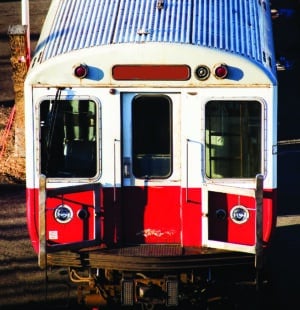The MBTA is getting close to a fully staffed slate of subway dispatchers six months after federal investigators warned that shortages posed safety risks, though it’s still not clear when the transit agency will reverse service cuts triggered by workforce issues.
MBTA Chief Safety Officer Ron Ester said Wednesday there are 27 dispatchers working in the operations control center, and six prospective workers are in a training program to become dispatchers. Two of the dispatchers are former retirees who returned to work and do not have a timeline to once again depart, according to the T.
Officials would like to bulk up that critical office to about 32 dispatchers, Ester said, though he added that he would “put an asterisk by it” until the T completes a full workforce assessment required by the Federal Transit Administration.
“Right now, they’re looking to get to 32,” Ester told the MBTA board’s safety subcommittee.
While the T has not yet reached its tentative goal, the 27 dispatchers on the job represents growth over the spring, when the FTA slammed the T for failing to staff the operations control center.
As of April 29, the FTA found, the T had only 14 heavy rail dispatchers – who manage the movement of trains throughout the system – employed, well short of the 20 that higher-ups had requested. Two of 11 budgeted supervisor positions were vacant.
An insufficient workforce resulted in dispatchers sometimes working as long as 20 hours followed by only four hours off, part of a climate where operations control center employees were “required to work without certifications, in a fatigued state, and often fulfilling multiple roles at once,” federal investigators wrote.
The MBTA slashed weekday service on the Red, Orange and Blue Lines after publication of the initial FTA report in June, scaling down the frequency of train trips in an attempt to avoid stretching dispatchers too thin. Those cuts remain in effect with no end date in sight, even as the agency draws closer to its expressed goal for operations control center staffing.
An MBTA spokesperson did not answer directly when asked about a timeline for reversing the summertime cuts.
“The MBTA continues to make good progress in recruiting, hiring and training,” said T spokesperson Joe Pesaturo. “We are working to enhance subway service and hope to make some improvements soon.”
Officials at the MBTA as well as a range of other public offices have publicly lamented labor challenges for months, rolling out hiring bonuses and other attempts to try and attract workers.
And it’s not just dispatchers, either. The FTA estimated in its final report that the T might need as many as 2,000 more workers to safely run trains, buses and ferries at existing levels. MBTA officials hope to execute a hiring blitz to close that gap.
Another area the T has bulked up in recent weeks is its quality control. The T stood up a Quality, Compliance and Oversight Office to lead its response to the FTA, led by Katie Choe.
Meredith Sandberg, that office’s new deputy chief who started on Monday, told the safety subcommittee that officials hope to build the quality, compliance and oversight staff out to about 11 people and brought on the company Patrick Engineering to serve as project management consultants.
“We’re pushing hard to staff up the office,” Sandberg said.
Addressing those issues will soon fall to Gov.-elect Maura Healey, who will need to pick her own top deputy to run the beleaguered transit agency. MBTA General Manager Steve Poftak plans to step down on Jan. 3, two days before Gov. Charlie Baker turns over the corner office to Healey.
Ester said the heavy rail system – which consists of the Red, Orange and Blue Lines – had a “decent month in October” safety-wise. The rate of injuries per 1 million miles was better in October than September but still below the T’s target, while the average number of miles traveled between defects surpassed the goal.
He attributed some of the success to the newest CRRC-manufactured Orange Line cars, which are the only vehicles running on that line following a month-long emergency maintenance shutdown this summer. MBTA officials in the past few years have had to pull those new cars from service on multiple occasions to address problems.
“They’re performing really well, and I think that’s why you see these numbers the way they are,” Ester said. “The Orange Line fleet at this point in time has only been running the new cars, so we’re seeing really good performance out of the new Orange Line fleet.”







